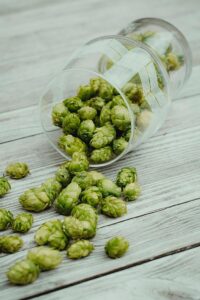Taking your homemade beer to a competition is an exciting step! Getting feedback from experts (and maybe even taking home a prize) is a great way to improve your skills and show off your brewing talents. This guide is here to break down each step of the process…from choosing the best style and recipe to bottling, packaging, and following competition rules. Let’s get started!
Understanding Competition Rules and Categories
Before you start brewing, take a look at the competition’s specific guidelines. Most competitions use the BJCP (Beer Judge Certification Program) style guidelines as a standard. These guidelines outline what judges expect for each beer style, covering factors like taste, appearance, aroma, and texture.
- Review the Rules Carefully: Competitions have unique rules about submission deadlines, entry fees, and other requirements. Familiarize yourself with these details.
- Choose the Right Style Category: The style you select should align well with the characteristics of your beer, as mislabeling could affect your score.
- Watch for Special Instructions: Some competitions limit the number of entries per category or require detailed ingredient lists. Checking these requirements early can help prevent last minute surprises.
Choosing the Right Recipe and Style
Selecting a beer style that suits your brewing experience and matches the competition guidelines can make a big difference.
Understand Style Expectations: Read through the BJCP guidelines for the style you’re brewing. Pay attention to:
- Flavor Profile: The ideal balance of sweetness, bitterness, and any distinctive notes.
- Aroma: Expected aromas from hops, malt, and yeast.
- Appearance: Color, clarity, and carbonation should match the style.
- Texture: Body and carbonation levels also play a role in how your beer is judged.
Stick to a Reliable Recipe: Go with a recipe you’ve brewed successfully before instead of experimenting with something brand new.
- Brew a Test Batch: Try a test batch and take notes on what went well and what might need tweaking. This extra step is often worth it.
Fine Tuning Your Brewing Process

If you want your beer to stand out, consistency and quality are key. Here’s how to make sure your brew is top-notch:
- Source Fresh Ingredients: Quality ingredients such as fresh grains, hops, and yeast are essential. Avoid anything stale or past its prime.
- Sanitation is Critical: Clean and sanitize all your equipment thoroughly to avoid contamination, which can lead to unwanted flavors.
- Control Temperature Carefully: Yeast is temperature sensitive, so keeping the fermentation temperature steady will bring out the best in your beer.
- Keep Track of Gravity Readings: Regularly check the specific gravity of your brew using a hydrometer or refractometer to stay consistent and track alcohol content.
Certain styles, like lagers, may need longer aging to reach their full flavor. If that’s the case, allow yourself extra time.
Preparing and Packaging Your Entry
A well-presented entry is a big part of competition success. Here’s how to bottle and package your beer to make the best impression:
- Get the Carbonation Right: Make sure the carbonation level suits the style. Under or over carbonation can throw off the balance.
- Use Clean, Label-Free Bottles: Most competitions prefer plain brown bottles to keep entries anonymous and prevent light exposure.
- Seal Bottles Tightly: Secure caps to avoid oxidation, which can affect flavor. Some competitions may have specific rules about bottle caps, so double check.
It’s a good idea to bottle a few extras as backups, just in case.
Filling Out Forms and Labeling Bottles
With your beer bottled, it’s time to handle the paperwork:
- Label Correctly: Follow the instructions exactly, including the beer style and category. Some competitions provide labels, while others require you to make your own.
- Include Brewing Notes (if allowed): Some competitions allow a short description, so highlight any unique elements, but keep it brief.
- Double Check Fees and Deadlines: Make sure you’ve covered the entry fees and are submitting on time to avoid any last minute issues.
Tips for Submission Day
As you prepare to send off your entry, here are some tips to keep it in top shape:
- Pack Bottles Carefully: If you’re shipping, wrap bottles securely with bubble wrap or foam and use a sturdy box to prevent breakage.
- Submit Early: Avoid last minute stress by sending your entry a few days before the deadline.
- Keep a Sample for Yourself: Retaining a bottle at home allows you to compare it with the judged sample if you receive feedback.
What Judges Look For
Understanding the judging criteria can help you fine-tune your entry:
Key Scoring Areas: Judges typically score on aroma, appearance, flavor, texture, and overall impression, with flavor and aroma often carrying the most weight.
Common Pitfalls:
- Oxidation: Often tastes like cardboard or stale flavors.
- Diacetyl: A buttery flavor that can result from incomplete fermentation.
- Sanitation Issues: Contamination can cause sour or unpleasant off-flavors.
Use Feedback as a Learning Tool: Feedback from the judges provides valuable insights. Whether or not you win, take notes on any critiques to help improve your brewing skills for next time.
Final Thoughts
Entering your first beer competition is a big step, and it’s all about learning and enjoying the process. Here’s a quick recap for success:
- Read the Rules: Familiarize yourself with the guidelines and categories.
- Brew with Precision: Focus on style and keep track of your results.
- Keep Everything Clean and Consistent: Good sanitation and precision are crucial.
- Present Well: Label, bottle, and package carefully.
- Submit on Time: Give yourself a buffer before the deadline.
- Learn from Feedback: Use feedback to improve and grow as a brewer.
Cheers to your first competition and the many more to come! Before you know it, you’ll be competing at one of the top level beer brewing competitions.
Leave a Reply